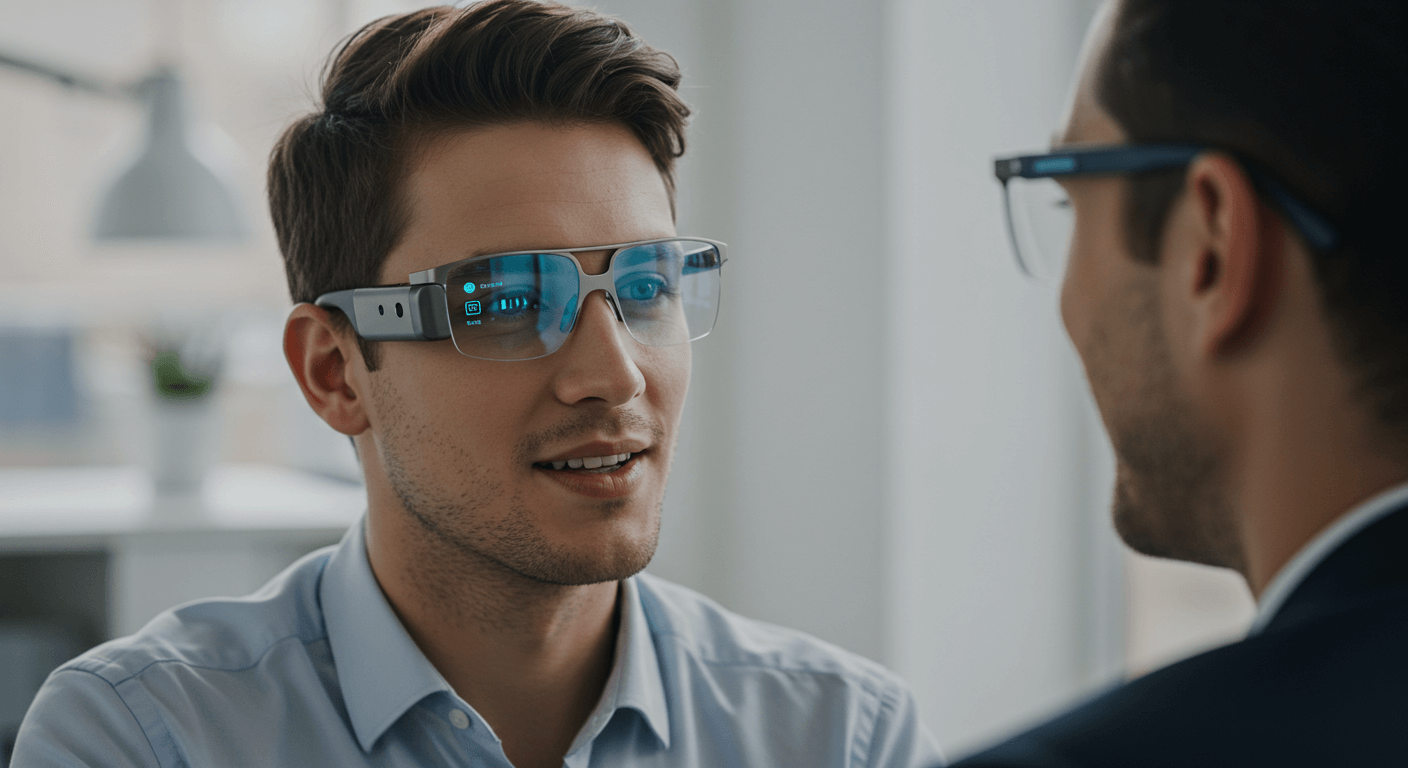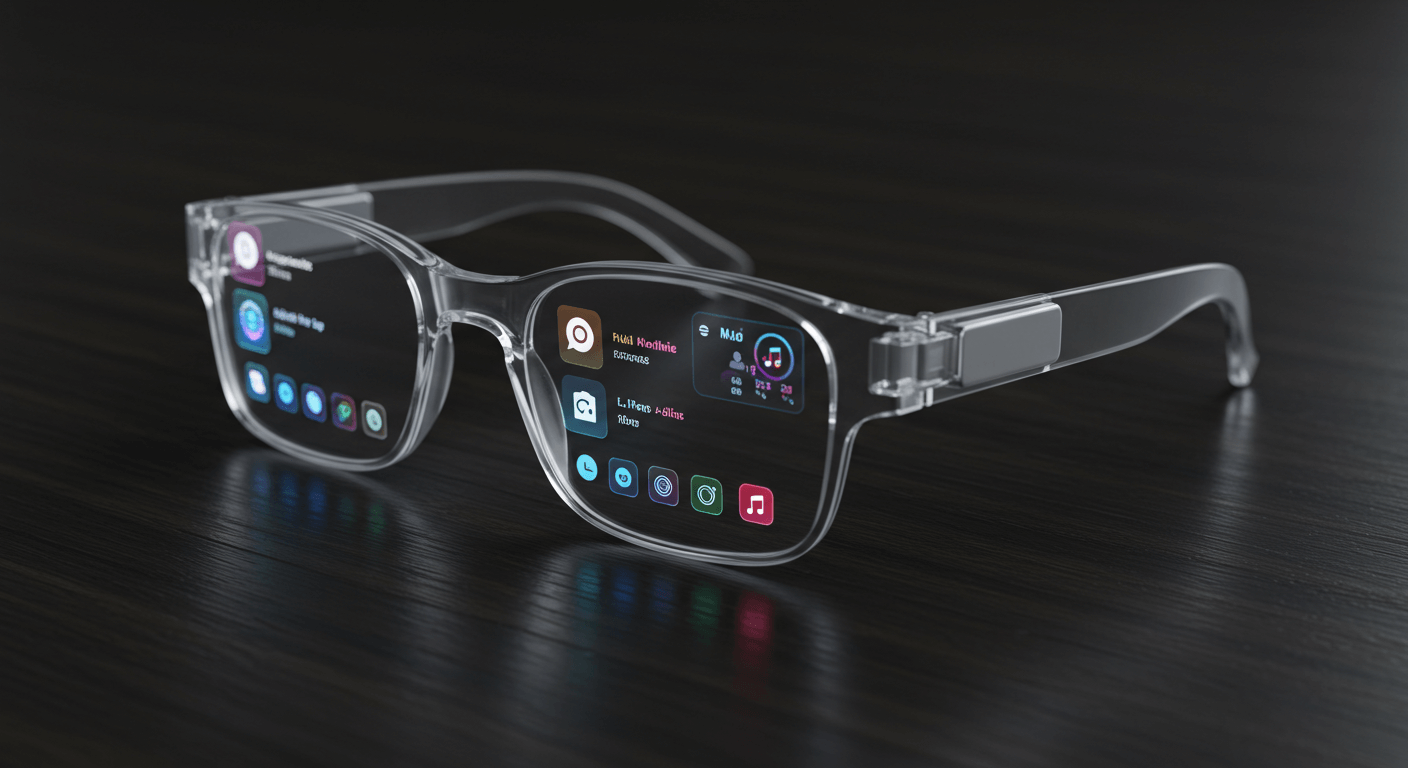Over the past ten years, one of the most talked-about developments in wearable technology has been smart glasses. They were formerly thought to be futuristic, yet they are now a part of daily life. Smart glasses promise to integrate digital convenience with everyday activities, including features like fitness tracking, real-time navigation, immediate notifications, and entertainment. However, a lot of people are left wondering if smart glasses are actually worth the hype or if they are just another tech fad because of all the hype around them.
In contrast to conventional wearables like fitness trackers or smartwatches, smart glasses provide a smooth, futuristic hands-free experience. They are made to make technology more user-friendly by projecting data straight into your field of vision, offering voice-activated controls, and even integrating with augmented reality. Both computer enthusiasts and regular users have taken notice of this blend of innovation and usefulness.
Smart glasses do have certain drawbacks, though. Buyers frequently hesitate because to worries about exorbitant costs, low battery life, and privacy concerns. Some believe they are still too early in development for daily usage, while others see them as revolutionary tools for professionals, fitness enthusiasts, and multitaskers.
We’ll analyse more closely the features, advantages, and disadvantages of smart glasses in this blog post. We’ll also look at the potential users and the direction of this technology in 2025 and beyond. By the end, you’ll know for sure if buying smart glasses is a wise decision for you or if you should hold off until the technology advances further.
What Are Smart glasses?
Smart glasses are wearable technology that combines cutting-edge digital technology with the functionality of eyeglasses. In contrast to regular glasses, they incorporate technologies such as integrated speakers, cameras, microphones, and displays to improve everyday chores and provide information. To put it simply, smart glasses let users access digital tools without picking up a laptop, tablet, or smartphone.
These glasses overlay digital content directly into your field of vision utilizing tiny projectors or heads-up displays. Depending on the model, you may view incoming messages, health information, navigation instructions, or even augmented reality features like interactive applications and 3D objects. Often integrated, voice assistants like Alexa, Siri, or Google Assistant allow users to perform things like making calls, playing music, and setting reminders hands-free.
Today’s smart glasses come in a variety of forms, from thin and light models for fitness tracking and notifications to more sophisticated models that enable AR (augmented reality) and VR (virtual reality) experiences. While some are targeted at consumers seeking convenience and futuristic design, others are offered to experts in industries including engineering, healthcare, and logistics.
The ability of smart glasses to replace a variety of gadgets is one of their main selling points. Imagine receiving turn-by-turn instructions, tracking your workouts, or checking your messages without ever glancing down at a phone. They are particularly tempting to multitaskers and those who spend a lot of time on the fly because of their hands-free functionality.
Fundamentally, smart glasses are made to combine wearable comfort with state-of-the-art technology, fashion, and function. Despite their seemingly ordinary appearance, they contain a layer of digital intelligence that could revolutionize how people use technology.
Key Features of Smart Glasses
The many functionalities that are crammed into a well-known wearable form make smart glasses unique. The majority of models have a set of fundamental features intended to increase connectivity, productivity, and convenience, even if each brand offers unique capabilities.
The most often used feature is the heads-up display. These let users see fitness data, text messages, notifications, and navigational instructions right in front of them. The information appears smoothly on the lens or using projection technology, eliminating the need to continuously grab for a phone.
Virtual assistants and voice control are other distinguishing features. With the help of voice commands, users can send messages, conduct online searches, and set reminders thanks to the integration of many smart glasses with Siri, Alexa, or Google Assistant. This hands-free function is particularly helpful when working, driving, or working out.
Numerous variants come with integrated audio features like bone-conduction systems or open-ear speakers. This is a safer option for outdoor activities like biking or jogging since it lets users listen to music, take calls, or hear notifications without drowning out background noise.
Video recording and cameras are also widespread. Certain smart glasses enable users to rapidly capture pictures or record brief movies, offering a first-person viewpoint ideal for vlogging, project documentation, or preserving special moments.
Furthermore, sophisticated models have augmented reality (AR) capabilities that allow them to superimpose data and digital objects onto actual landscapes. Professionals in fields where real-time data visualization boosts productivity, including healthcare, construction, or logistics, will particularly benefit from this.
Additional features include Bluetooth connectivity, mobile app compatibility, and tracking of fitness and wellness. All of these characteristics combine to make smart glasses more than just eyewear; they are discrete, portable digital friends. With so many uses, smart glasses have the potential to improve daily chores and pave the way for exciting new experiences.
Useful Applications in Everyday Life

Smart glasses are becoming more and more useful tools for daily life, not merely futuristic devices. Their ability to fit in with daily activities and save time, stay connected, and multitask more effectively is what makes them so appealing.
Helping with navigating is one of the most popular applications. Users can view real-time directions displayed in their field of vision rather than looking down at a phone screen. This feature is very helpful while walking, bicycling, or driving in new places.
Smart glasses make it possible for people who need to communicate constantly to make calls and send messages without using their hands. Instantaneous display of emails, reminders, and notifications reduces distractions and keeps you informed without requiring you to reach for your phone.
Health tracking tools are also beneficial to fitness fanatics. Some versions provide encouraging cues during workouts while tracking steps, heart rate, or calories burned. Runners and cyclists value performance numbers and audio coaching that are shown right on their lenses.
Smart glasses increase efficiency at work. Augmented reality (AR) elements can be used for virtual walkthroughs, project collaboration, and video conferencing for remote workers. Technicians and field personnel can see schematics or instructions hands-free, increasing productivity and lowering mistakes.
On-the-go entertainment is an additional daily benefit. Smart glasses’ integrated audio and visual capabilities let users stream music, watch brief videos, and listen to podcasts without carrying around additional devices.
Simple chores like grocery shopping can be made more efficient. With the help of shopping apps, certain smart glasses may display product details or lists right in front of your eyes. Applications range from professional settings to exercise to commuting. Smart glasses are demonstrating their ability to transcend novelty and function as useful tools that improve daily life by fostering connections and efficiency.
Benefits and Drawbacks of Smart Glasses
Smart glasses have benefits and drawbacks, just like any new technology. Determining whether they are worth the expenditure can be aided by being aware of the advantages and disadvantages.
Benefits
Convenience is one of the main benefits. Whether you’re checking your notifications, following instructions, or making brief calls, smart glasses let you access information without using your hands. This keeps consumers more aware of their surroundings and less dependent on cellphones.
The improvement of production is an additional advantage. Augmented reality (AR) overlays allow professionals in sectors like healthcare, construction, and logistics to access information or instructions instantly. This increases accuracy while simultaneously saving time.
Additionally, smart glasses enhance lifestyle and fitness. They function as all-in-one gadgets that promote healthy habits and offer convenience during workouts or commuting thanks to their integrated health tracking and entertainment capabilities.
Smart glasses are considered a cutting-edge breakthrough among tech enthusiasts. From augmented reality games to hands-free photography and real-time translation tools, they provide a futuristic and immersive experience.
Drawbacks
Notwithstanding the enthusiasm, smart glasses continue to have a number of drawbacks. Battery life is one issue. For heavy users, the usefulness of many models is limited because they are unable to withstand a full day of use.
Cost is another disadvantage. Because high-end smart glasses can be expensive, the typical consumer may not be able to afford them. Privacy is another important issue. Built-in microphones and cameras cause spectators to feel uneasy in public places and raise concerns about surveillance. Finally, comfort and design continue to be obstacles. Not everyone can wear them for extended periods of time, and some types are thicker than ordinary glasses.
Inconvenience and innovation coexist in smart glasses. Although the advantages emphasize how they will change everyday activities, the disadvantages imply that there is still an opportunity for advancement in the technology.
Are They Worth the Investment?
Depending on lifestyle, needs, and expectations, smart glasses may or may not be worth the expense. They could seem like a futuristic luxury to some, but they can also be a useful tool that improves daily productivity for others.
Professionals may find the investment to be worthwhile. Field technicians, engineers, warehouse employees, and healthcare professionals all gain from augmented reality technologies, hands-free data access, and real-time instructions. In professional settings, these features can immediately increase output and performance, which justifies the expense.
Value from the standpoint of the customer is determined by how frequently the features are truly utilized. A smartphone or smartwatch could seem more useful and economical if the primary function is to check notifications or record quick videos. However, smart glasses offer a distinct advantage over conventional gadgets if immersive navigation, real-time translation, or fitness tracking are top priorities.
The long-term possibilities should also be taken into account. Since the technology is still developing, smart glasses may become more affordable as their usefulness increases. Although early adopters have access to cutting-edge innovation, they might have to deal with drawbacks like bulkier designs or shorter battery life. Better value for money can result from waiting for the following generation.
Not every model fits in with everyday fashion, which is problematic for people who care about comfort and style. This may affect users’ confidence in wearing them on a regular basis, which should be taken into consideration before making an investment.
For those who appreciate innovation, require hands-free access, or operate in fields that profit from augmented reality capabilities, smart glasses are ultimately worthwhile. However, the hefty cost and existing restrictions could not offer enough daily value to make the purchase worthwhile for casual users.
Conclusion

In ways that traditional gadgets cannot, smart glasses combine elegance and functionality to provide hands-free access to information, making them one of the most intriguing developments in wearable technology. They might boost entertainment, increase efficiency, and introduce augmented reality into daily life.
However, each person’s needs and expectations will determine whether they are indeed “worth the hype.” By simplifying work and facilitating speedier decision-making, the investment can offer significant value to professionals in industries like engineering, healthcare, and logistics. It’s possible that novelty and convenience will appeal to regular consumers more than necessity.
It’s critical to balance the advantages with the drawbacks, including comfort, cost, and battery life. Early adopters of smart glasses may have to make trade-offs that will probably be resolved by later models because the technology is still in its early stages of development.
Ultimately, people who value innovation and have specific applications where hands-free technology is advantageous will find smart glasses to be most beneficial. Others might find it preferable to hold off until the technology develops further and becomes more widely available. Smart glasses are more than simply a device; they offer a window into the linked lifestyle of the future.
